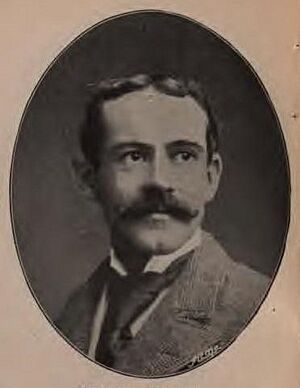Enfield (UK Parliament constituency) facts for kids
Quick facts for kids {{{Name}}}[[{{{Type}}} constituency]] |
|
|---|---|
| [[Image:{{{Map1}}}Constituency.svg|120px|]] [[Image:England{{{Map2}}}.svg|120px|]] |
|
| {{{Name}}} shown within [[{{{Entity}}}]], and {{{Entity}}} shown within England | |
| Created: | {{{Year}}} |
| MP: | {{{MP}}} |
| Party: | {{{Party}}} |
| Type: | House of Commons |
| County: | [[{{{County}}}]] |
| EP constituency: | [[{{{EP}}} (European Parliament constituency)|{{{EP}}}]] |
Enfield was a special area in the United Kingdom that elected one person to the House of Commons. This is part of the UK Parliament. The area was in the very north of Middlesex, around the town of Enfield. It was part of the big city area of London.
The Enfield area changed quite a bit over the years. This happened as more and more people moved to the suburbs and cities. It elected one Member of Parliament (MP) at a time. An MP is a person who represents their local area in Parliament. They help make laws and decisions for the country.
Contents
History of Enfield's Parliament Seat
The Enfield area was first set up as a special voting area in 1885. This was for the general election that year. It stopped being a single voting area in 1950.
After 1950, the area was split into two new voting areas. These were called Enfield East and Enfield West.
How Enfield's Borders Changed
The borders of the Enfield voting area changed over time. This was to make sure each area had a fair number of voters.
Enfield's Early Borders (1885–1918)
When it was first created, the Enfield voting area included several smaller towns. These were Edmonton, Enfield, Friern Barnet, Monken Hadley, and South Mimms. These were old local areas.
Friern Barnet was a bit of an odd shape. It stuck out towards the county border. Many of these areas were close to Barnet in Hertfordshire.
Enfield's Later Borders (1918–1950)
In 1918, the voting areas across Great Britain and Ireland were redrawn. This was due to a new law called the Representation of the People Act 1918.
- The Enfield voting area then included the Urban District of Enfield.
- It also included the Rural District of South Mimms.
Some parts of the old Enfield area moved to other voting areas:
- Edmonton became its own separate voting area.
- Friern Barnet moved to the new Finchley voting area.
- A new voting area called "Wood Green" was created. This took the southern parts of Enfield and a small part of Edmonton.
The Rural District of South Mimms was later renamed Potters Bar Urban District in 1934.
Members of Parliament for Enfield
Here are the people who represented Enfield in the UK Parliament:
| Election | Member | Party | |
|---|---|---|---|
| 1885 | William Pleydell-Bouverie | Conservative | |
| 1889 by-election | Henry Bowles | Conservative | |
| 1906 | James Branch | Liberal | |
| 1910 | John Pretyman Newman | Conservative | |
| 1918 | Henry Bowles | Conservative | |
| 1922 | Thomas Fermor-Hesketh | Conservative | |
| 1923 | William Henderson | Labour | |
| 1924 | Reginald Applin | Conservative | |
| 1929 | William Henderson | Labour | |
| 1931 | Reginald Applin | Conservative | |
| 1935 | Bartle Bull | Conservative | |
| 1945 | Ernest Davies | Labour | |
| 1950 | constituency abolished: see Enfield East and Enfield West | ||
How Elections Worked in Enfield
Elections are how people choose their representatives in Parliament. In Enfield, people voted for one person to be their MP.
By-elections
Sometimes, a special election called a "by-election" happens. This is when an MP leaves their job before the next general election. For example, if they get a new important role or move to a different part of Parliament.
- In 1886, William Pleydell-Bouverie became the Treasurer of the Household. This meant a by-election was needed.
- In 1889, William Pleydell-Bouverie became an Earl. This also caused a by-election.
General Elections in the 1910s
Before the end of 1915, another general election was planned. The political parties were getting ready. By July 1914, the main candidates were:
- Unionist: John Pretyman Newman
- Liberal: John McEwan
However, the election didn't happen as planned due to World War I.
Another general election was expected before the end of 1940. The parties had chosen their candidates:
- Conservative: Bartle Bull
- Labour: Ernest Davies
This election was also delayed because of World War II.
Images for kids





